Guilty Gear Strive: Damage Scaling Explained
Table of Contents
We take a look at the specifics of health and damage scaling which is dependant on guts, defense rating, and R.I.S.C.
You Are Reading :Guilty Gear Strive Damage Scaling Explained
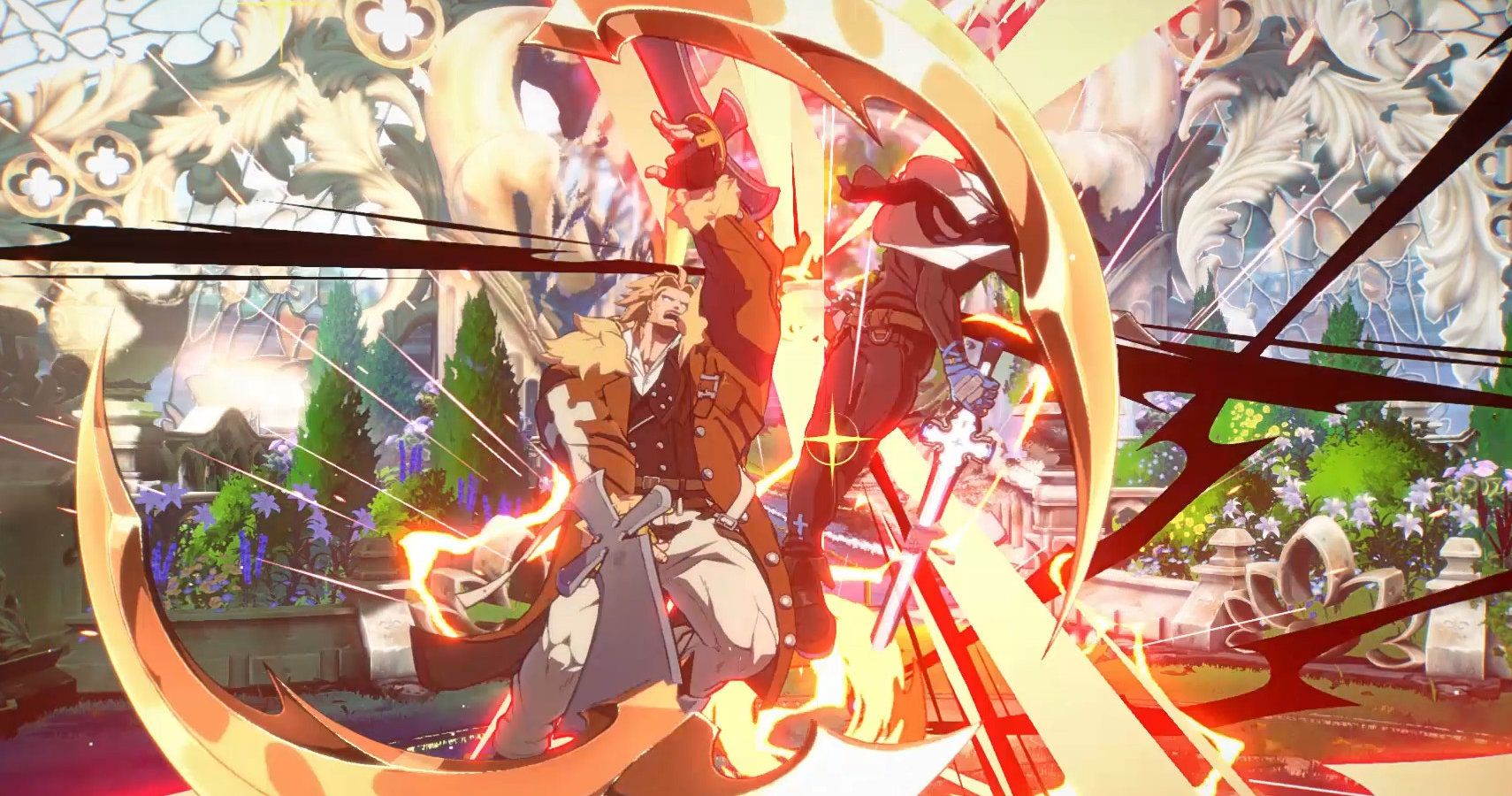
The seventh Guilty Gear title, Guilty Gear Strive is drawing plenty of franchise veterans and newcomers to the world of high-octane anime fighter action. While the end goal of any fighting game is usually depleting the opponent’s health bar (unless it’s a Tekken and Super Smash Bros. crossover), the way damage and health work in Guilty Gear Strive turns that into a less than straightforward affair.
Through a mix of three different systems: R.I.S.C., Defense Rating, and Guts, all Guilty Gear Strive Characters have their own way of rolling with the punches so let’s take a look at how this affects gameplay.
How Defense Rating (Health) Works In Guilty Gear Strive
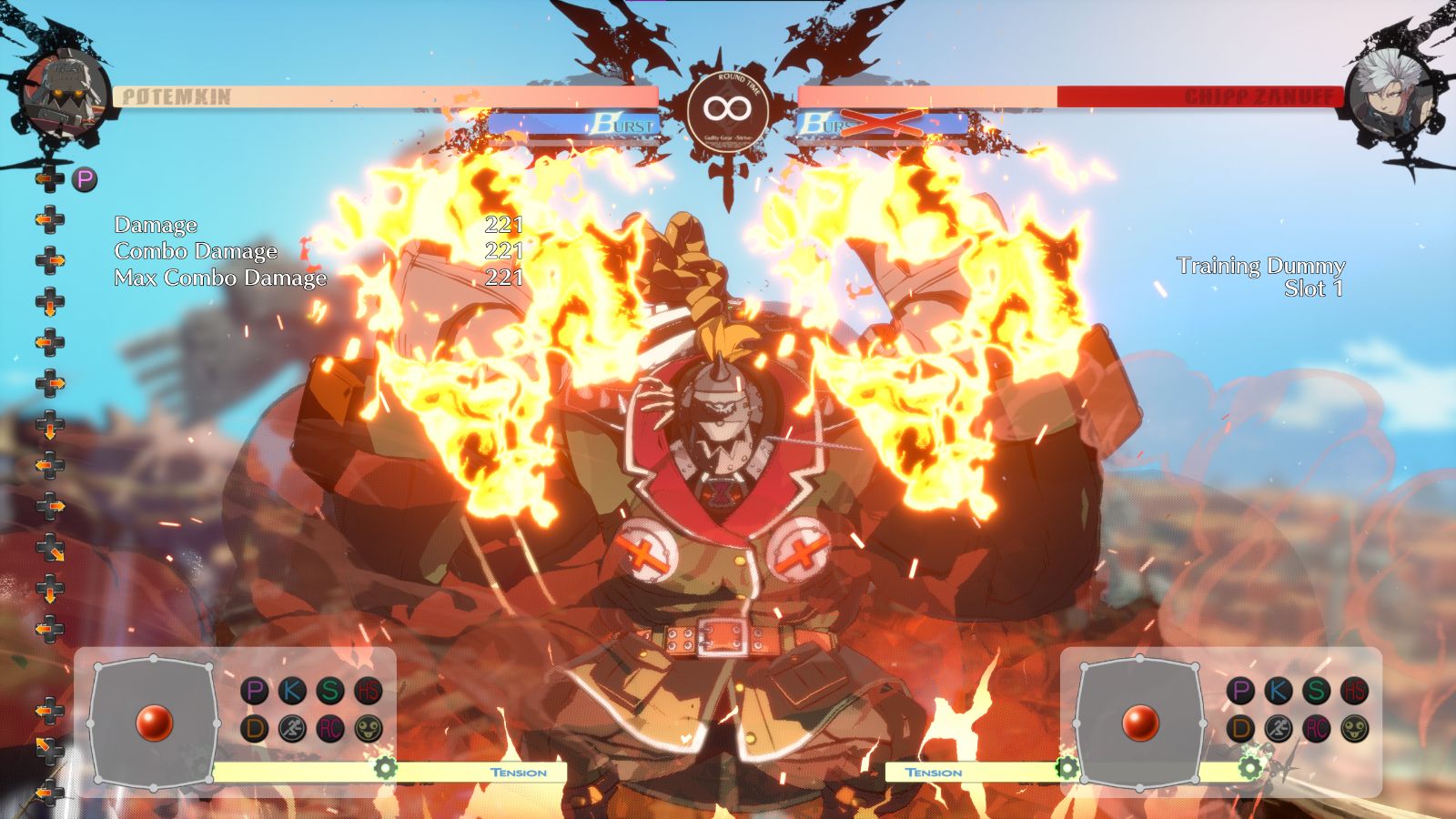
In a similar way to how the women and smaller frame characters in Street Fighter or Mortal Kombat tend to have lower health stats, each Guilty Gear character can take a certain amount of punishment before defeat. Despite this, every one of the game’s 16 characters is equipped with 420 life points that get slowly or quickly beaten out of them depending on a series of predetermined multipliers.
To make this easier to understand, let’s take the towering grappler Potemkin against the agile but frail Chipp Zanuff. The big guy’s signature “Potemkin Buster” move deals 175 base points of damage, yet Chipp’s high mobility comes at a cost, meaning his 1.26 Defense Rating translates into him taking 26% more damage from all attacks. Conversely, in a Potemkin ditto, the character with the game’s best defense rating (0.93) would receive 7% less damage from every move.
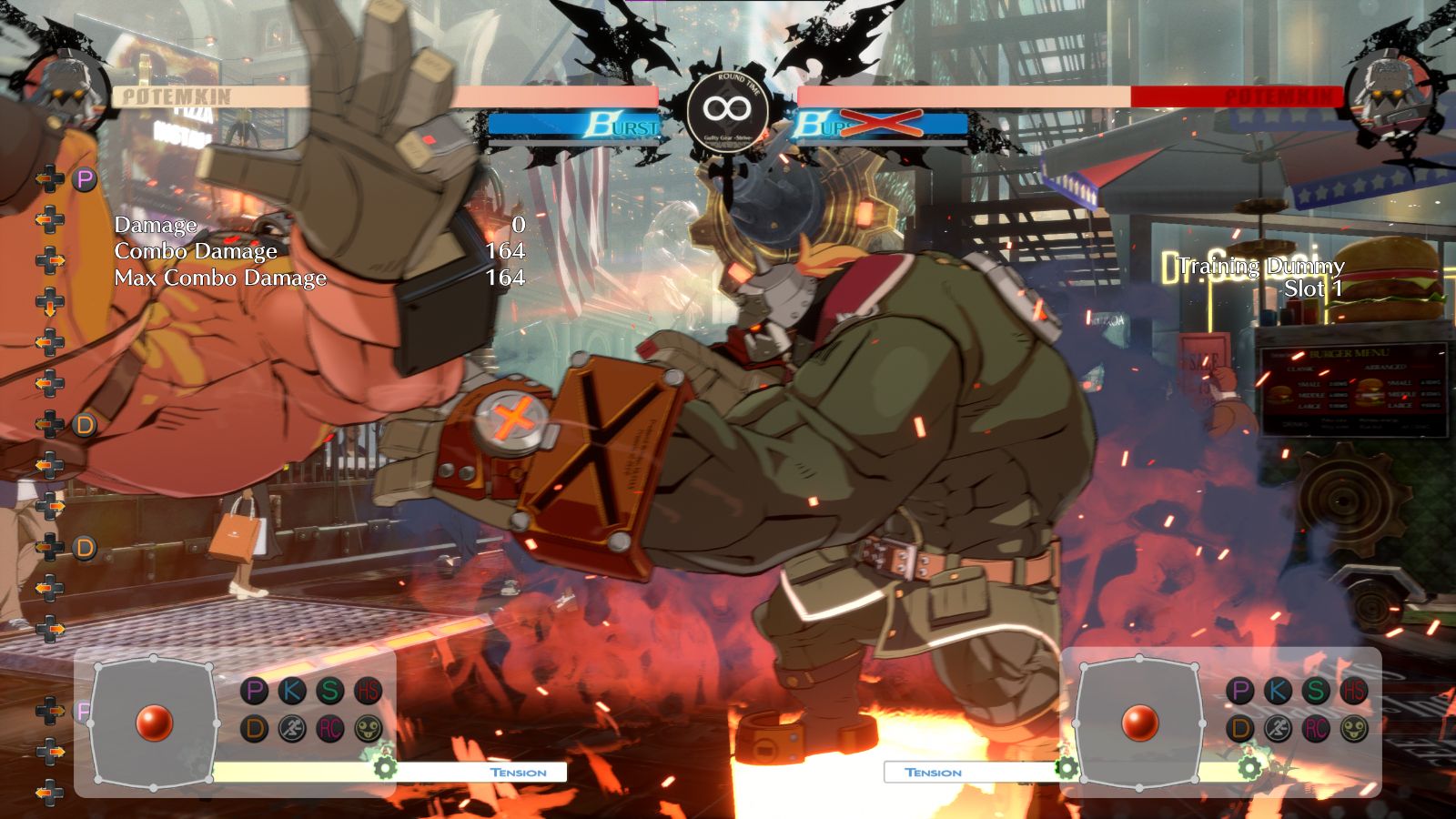
This explains why the same Potemkin Buster can take away more than half of Chipp’s life bar (221 damage), while not being quite as punishing for Potemkin to be on the receiving end of what for him is a 164 damage hit. Naturally, over the course of a full round, these differences really add up to their full effect.
Here’s a full breakdown of the Defense Rating tiers in Guilty Gear Strive’s roster:
- 0.93 (-7% damage): Potemkin and Giovanna with Tension gauge at 100%
- 0.96 (-4% damage): Nagoriyuki
- 0.97 (-3% damage): Giovanna with Tension gauge over 50%
- 0.98 (-2% damage): Sol Badguy
- 1.00 (No variation): Ky Kiske and Leo Whitefang
- 1.01 (+1% damage): Faust
- 1.03 (+3% damage): Giovanna with Tension gauge under 50%
- 1.06 (+6% damage): Anji Mito, I-No, May, and Ramlethal Valentine
- 1.07 (+7% damage): Axl Low and Zato-1
- 1.18 (+18% damage): Millia Rage
- 1.26 (+26% damage): Chipp Zanuff
How Guilty Gear’s Guts System Works
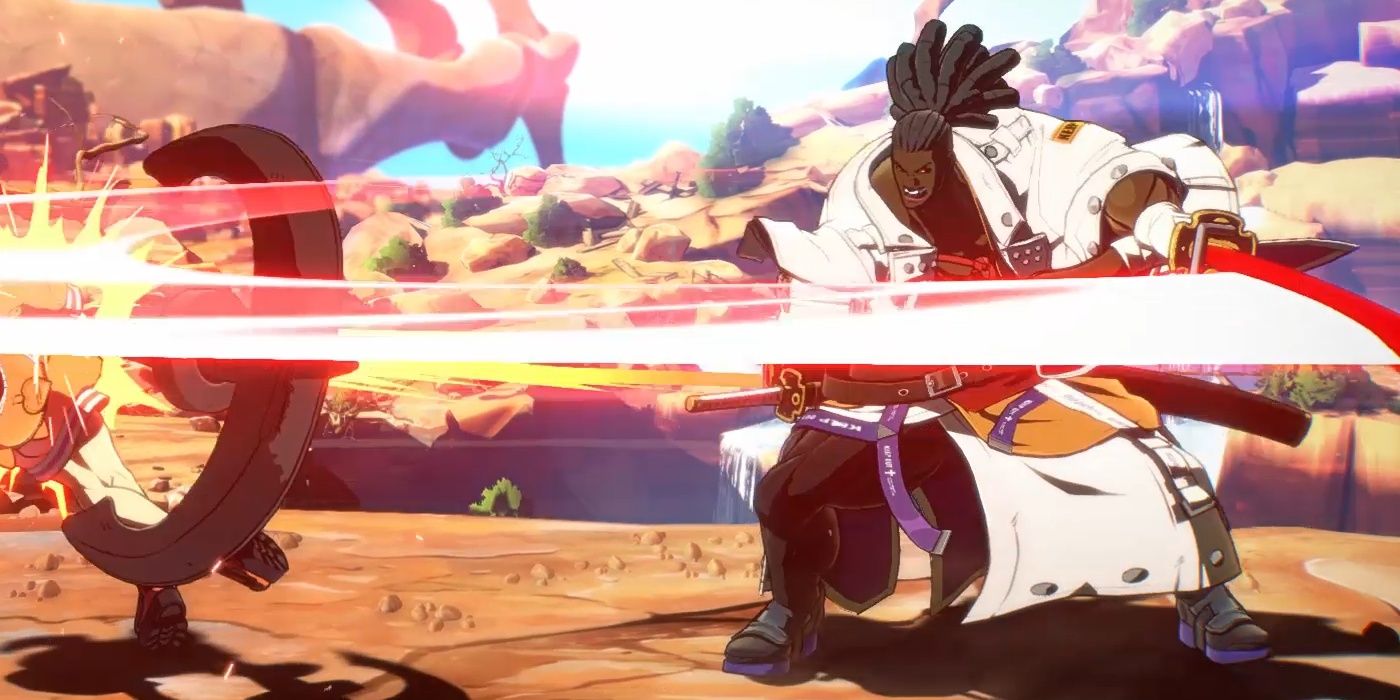
Like in most competitive fields, Guilty Gear characters come with their own clutch factor that allows them to survive for a bit more than expected. Even if the thought of having half your life bar drained by a Potemkin Buster can make anyone cower in fear, it bears saying that what looks like 50% life actually turns out to be much more when Guts are factored in.
Just like the Defense Rating, the Guts multiplier comes in different tiers ranging from 0 to 5, counting from worst to best. So how does the Guts system work? Well, when you lose more than the visual representation of 30% in your health bar Guts come into play resulting in decreasing damage from every hit (according to Guts rating) as your character’s life is lowered 10%. more.
If all that sounds a bit confusing, here’s a quick cheat sheet to help you figure out how many of May’s dolphins your main character can take.
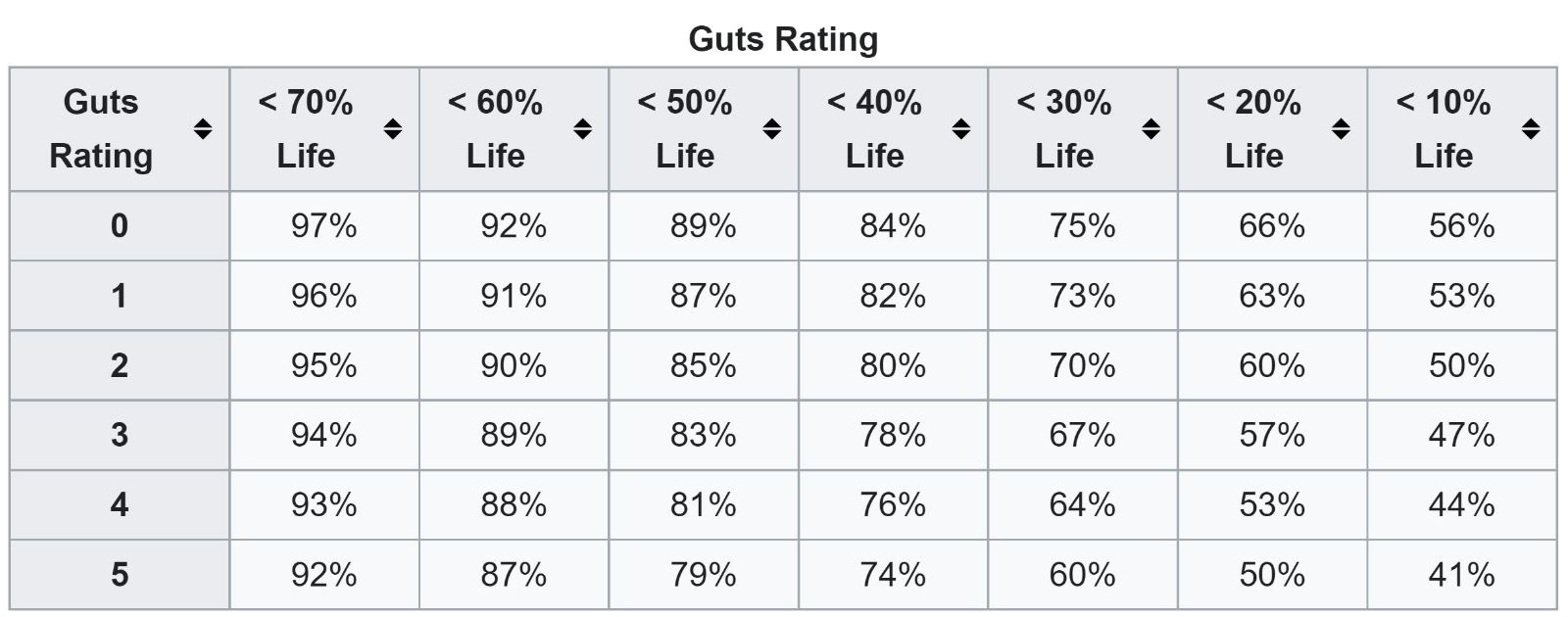
To further explain things, let’s take I-No’s “Megalomania” super, a highly damaging command grab that like most overdrive moves causes wall breaks for some extra punch; and let’s make the beefy Nagoriyuki the target for this experiment.
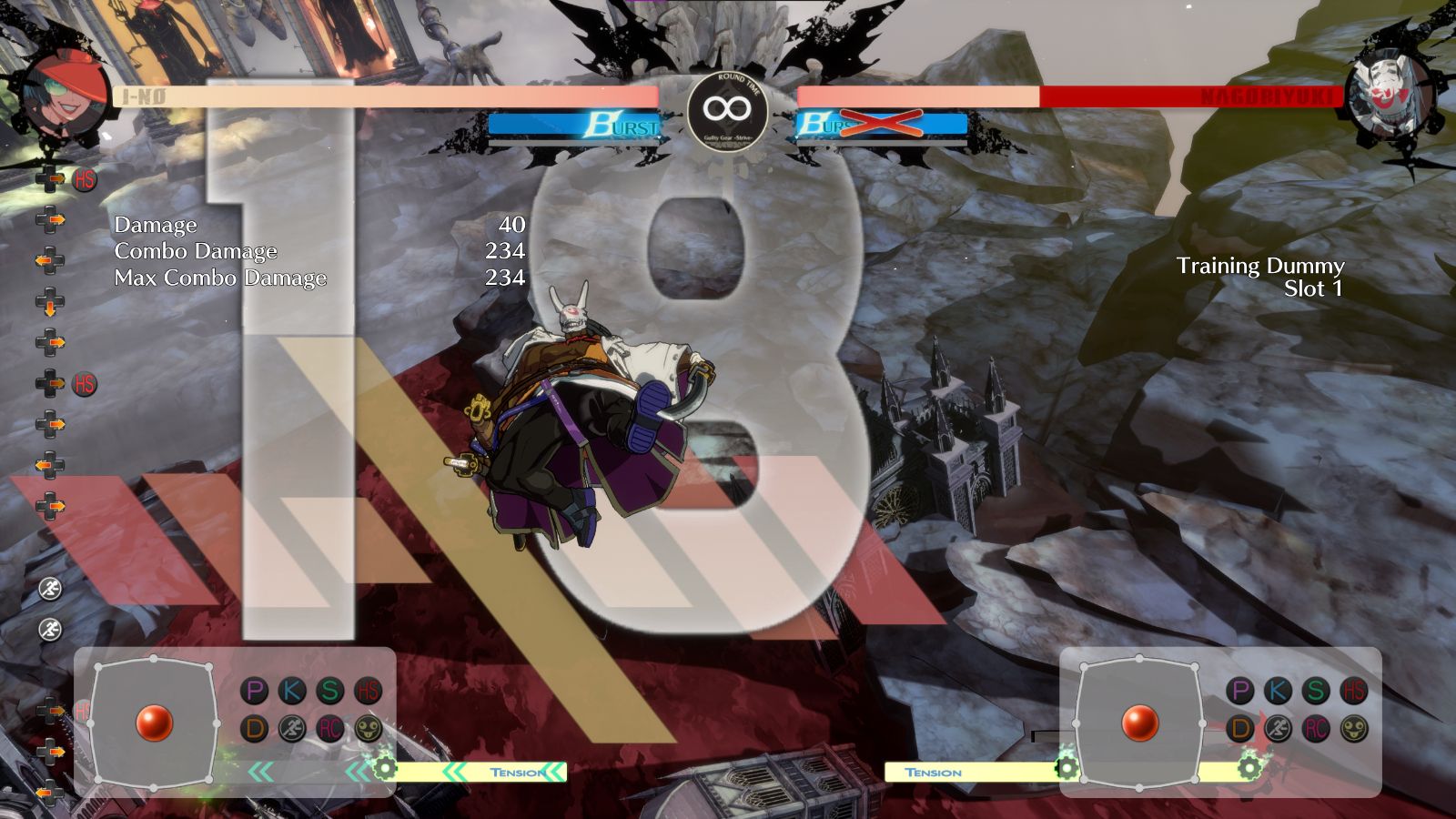
With the added wall break damage, I-No’s “Megalovania” cuts through Nagoriyuki as if the samurai vampire was a stick of butter, dealing 234 damage points that put to shame Potemkin’s previously examined attack on Chipp. After all, Nagoriyuki’s Defense Rating makes him, the second toughest character in the game.
At this rate, Nagoriyuki is just about to bite the dust were it not for the fact that he’s also blessed with one of the best Guts Ratings in Guilty Gear Strive. So let’s see what happens when Nagoriyuki takes another “Megalovania” overdrive from I-No when he’s at 30% health.
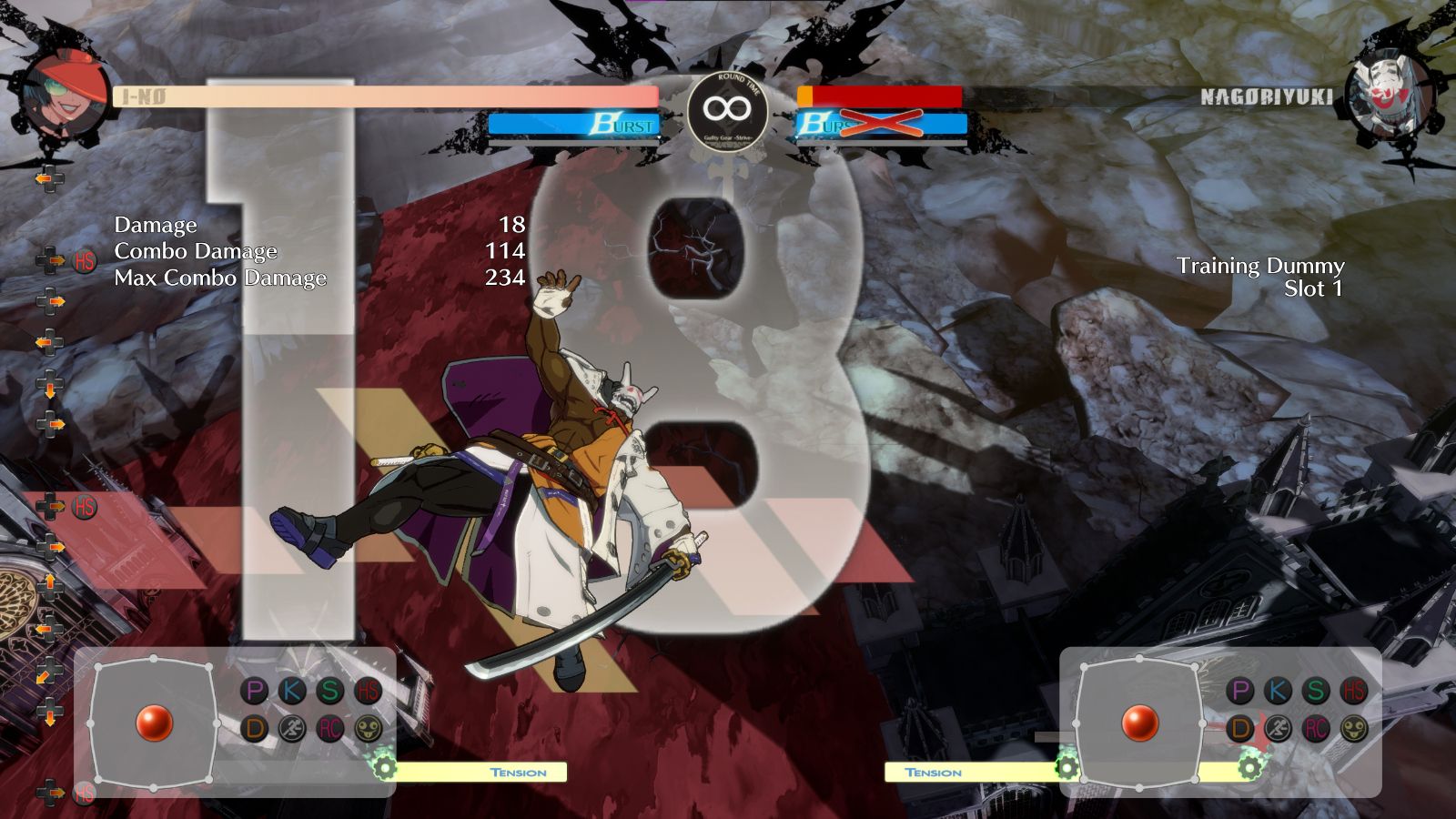
Surprisingly, Nagoriyuki powers through another 18 hit I-No overdrive move thanks to his Guts Rating also being second highest at 4. The lesson here is simple, in Guilty Gear Strive health bars are actually not really indicative of how much life you have left so there’s actually plenty to fight for when things are looking bleak.
Yet, a bigger takeaway from all of this managing your attack usage on your opponent accordingly, because clearly when their life bar is full it’s best to go for high damaging moves; whereas once it looks like you’re about to take them out, the better choice is to stick with several smaller hits to take advantage of how damage scaling works.
As to who are the characters who benefit the most from Guts, here’s are Guilty Gear Strive’s best clutch performers in order:
- Guts 5: Anji Mito
- Guts 4: Nagoriyuki, May, and Chipp Zanuff
- Guts 3: Potemkin and Leo Whitefang
- Guts 2: Sol Badguy, Ky Kiske, and Millia Rage
- Guts 1: Giovanna, I-No, Ramlethal Valentine, and Axl Low
- Guts 0: Faust and Zato-1
Conclusion
As for the last of the mechanics, R.I.S.C., its effects are much less noticeable on a wider scale since they pertain more to the way long combos and each attack in Guilty Gear individually interacts when striking the opponent, as well as having its own R.I.S.C. gauge below the health bar. To put it bluntly, R.I.S.C. manages itself pretty well, and playing around this mechanic is delving into high-level gameplay territory.
Ultimately, Defense and Guts ratings play a much bigger role in making Nagoriyuki the overall toughest character to kill, as well as one of Guilty Gear Strive’s most difficult characters to play. The main lesson to learn when it comes to damage scaling is that when your health bar is getting low, the fight is only getting started so it’s time to get those Roman Cancels ticking and spend that meter before it’s too late.
Link Source : https://www.thegamer.com/guilty-gear-strive-damage-scaling-explained/
